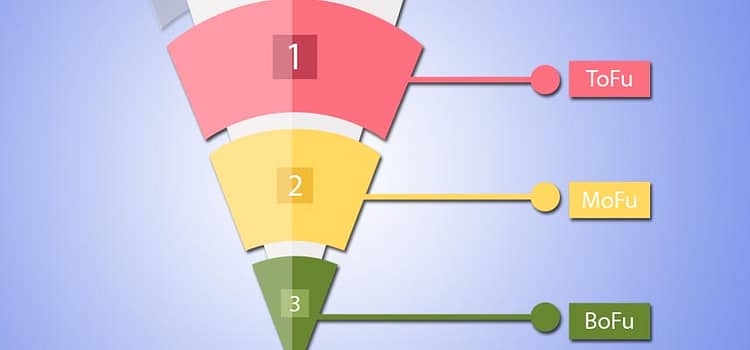
|
Getting your Trinity Audio player ready...
|
Want to understand how to guide your customers from discovering your brand to making a purchase decision? In this article, we’ll explain what ToFu, MoFu, and BoFu are, the essential stages of the Sales Funnel in Inbound Marketing.
Learn how to attract, nurture, and convert leads with targeted content strategies, ensuring an efficient and successful customer journey. Don't miss these tips to optimize your digital marketing strategy and increase your conversion rates!
What is Inbound Marketing?
If you've ever wondered how to effectively attract and convert customers in the digital age, then Inbound Marketing is a term you need to understand. Thus, unlike traditional marketing strategies, where companies actively seek out their customers, Inbound Marketing focuses on attracting customers through relevant and valuable content. This type of marketing is like a polite conversation, where the consumer is attracted by their needs and interests, and not pushed by an aggressive sale.
Inbound Marketing is all about creating content that attracts, engages, and delights your target audience. Over time, this content helps build trust and relationships with potential customers, leading them to make informed purchasing decisions. Now, let’s dive deeper into a core concept of Inbound Marketing: Sales Funnel.
The Customer Journey in Inbound Marketing
A customer journey is a central piece in Inbound Marketing. In this sense, it describes the path that a potential customer takes from the moment they discover your brand until the final conversion into a customer. This journey is made up of three main stages: awareness, consideration and decision. Thus, each of these stages is supported by different types of content that are strategically created to guide the customer through the sales funnel.
Understanding the sales funnel (ToFu, MoFu and BoFu)
The sales funnel is a visual representation of the customer journey, divided into three phases: ToFu (Top of the Funnel), MoFu (Middle of the Funnel) and BoFu (Bottom of the Funnel). These stages represent the evolution of the relationship between the brand and the customer, from the first contact to the purchase decision.
First and foremost, understanding the sales funnel is crucial to developing a sales strategy. Inbound Marketing Effective. Each stage of the funnel requires a specific type of content and approach to meet the needs and expectations of the customer at each stage. Consequently, this will ensure that your communication is relevant and impactful, increasing the chances of conversion.
What is ToFu (Top of the Funnel)
ToFu, or Top of the Funnel, is the first stage of the sales funnel, that is, the top position of the potential buyer's funnel. Here, the main objective is to attract the attention of potential customers who are beginning to realize that they have a need or problem. At this stage, they are still far from making a purchase decision. Therefore, they are just exploring their options and seeking information.
Imagine you’re walking down a street and see an interesting storefront. You stop, look, and maybe go into the store. That’s the role of ToFu: to capture initial interest.
Therefore, the lead is not yet qualified enough for a salesperson to close the sale, as it is still far from the purchasing stage.
Strategies to attract attention in ToFu
At ToFu, your mission is to generate as much visibility as possible to attract visitors to your website or blog. This can be done through several strategies, such as SEO, content marketing, social media, and paid advertising. Content here should be educational and informative, addressing common issues and challenges faced by your target audience.
ToFu Content Examples
At the Top of the Funnel, the type of content that works best includes blog posts, infographics, free eBooks, white papers, explainer videos, and introductory webinars. These materials, known as rich materials, should be designed to answer initial questions your audience may have and offer solutions that help them better understand their problems.
What is MoFu (Middle of the Funnel)
MoFu, or Middle of the Funnel, is the intermediate stage of the sales funnel. In other words, it is the middle of the funnel. The visitor who became a lead at the top of your funnel now has more information and interest on the subject. Therefore, they are more educated on the subject and more likely to purchase a product or service, since they have identified that they have a problem or need.
They’re aware of your brand, but they still need to be convinced that you’re the best choice. So, at this stage, you start building a deeper relationship with your leads by offering more detailed and specific content that helps them compare their options and move forward in the decision-making process.
This means that the content is no longer generic, but more specific. A mid-funnel e-book, for example, is more complex than a top-funnel e-book. Other content, such as case studies, application guides, and webinars, can be applied at this stage of the sales funnel.
Lead nurturing at MoFu
Nurturing leads in MoFu is like watering a plant that has just started to sprout. They already have some interest in your product or service, but they still need more information and encouragement to move on to the next stage. In this sense, this can be done through email marketing campaigns, automated email sequences, case studies, and product demos.
The middle of the funnel is a critical point in any company’s sales funnel. Here, you can lose a lead if you can’t show them that you have the solution to their problem.
On the other hand, care must be taken: you can even perform a pre sale when the lead is in this position, but with great tact so as not to scare the lead away. After all, they are not yet ready to buy and trying to forcefully “warm” them to go down the funnel could be a way of losing them.
MoFu Content Examples
In MoFu, content should be more detailed and targeted, such as in-depth white papers, case studies, comparison guides, advanced webinars, and product demo videos. Therefore, the goal is to educate leads on how your product or service can solve their specific problems and highlight the differentiators of your offering.
What is BoFu (Bottom of the Funnel)
The BoFu, or Bottom of the Funnel, is the final stage of the sales funnel. So, if you have properly warmed up the lead within your inbound marketing gear, you will be able to make it go down and become a customer.
At this point, leads are ready to make a purchasing decision. They’ve already gone through the awareness and consideration stages and are now evaluating which vendor to choose. At this point, they’re weighing the pros and cons of different options and need that final push to convert.
Imagine you’re in a store and have already chosen the product you want to buy. You just need a final confirmation, such as a satisfaction guarantee or a special offer, to make the purchase. So, that’s the role of BoFu.
Convert leads into customers in BoFu
At this stage, the focus is on converting leads into customers by offering incentives that help them make the final decision. This could include special offers, discounts, free demos, personalized consultations, or even a free trial period.
But BoFu is not just the part where we make the sale and ring the bell. This is the point of evaluating the transition from marketing to sales and understand if your funnel is working correctly.
Content examples for BoFu
Content types that work well on BoFu include detailed case studies, customer testimonials, product comparisons, live demos, free consultations, and personalized proposals. The goal is to provide the confidence your lead needs to make a purchasing decision and choose your brand.
The importance of integration between ToFu, MoFu and BoFu
Integration between ToFu, MoFu and BoFu is essential to ensure your leads have a smooth and effective journey through the sales funnel. This means that all content must be coherent and connected, providing a seamless experience throughout all stages.
A successful inbound marketing strategy considers the sales funnel as a whole, not as isolated parts. Therefore, this requires clear communication between the marketing and sales teams, so that everyone is aligned regarding goals and strategies.
A common mistake when implementing a sales funnel is to focus too much on one step, neglecting the others. For example, many companies invest heavily in generating leads in ToFu, but fail to nurture them in MoFu or convert them in BoFu. This results in an unbalanced funnel and missed sales opportunities.
Another mistake is not personalizing your content for each stage of the funnel. A message that works in ToFu won’t be effective in BoFu, and vice versa. It’s crucial to tailor your communication to meet the needs and expectations of your leads at each stage.
Best practices for optimizing your sales funnel
Sales funnel performance analysis is essential to identify bottlenecks and opportunities for improvement. This involves monitoring key metrics such as conversion rates at each stage of the funnel, average time to conversion, and engagement with content. The gears will only work if they are well-oiled. Otherwise, they will seize up.
Turning a visitor into a lead and moving them down the funnel is an art that requires a lot of study and adjustments. Have inbound apps like RD Station or similar, as well as other tools for analysis and everyday use.
A CRM will be essential and can provide valuable insights into how leads are moving through the funnel and where they are dropping off. With this data in hand, you can adjust your strategy to optimize funnel performance.
Adjusting the content strategy for each stage
Therefore, producing the right content and offering it at the right time is the key to quality inbound marketing. Each stage of the Sales Funnel requires a different content strategy. Thus, in ToFu, the focus is on attracting and educating, in MoFu, it is on nurturing and convincing, and in BoFu, it is on converting. Adjusting your content strategy for each stage ensures that you are delivering the right message, at the right time, to the right audience.
This may involve creating different types of content for different personas, personalizing messages based on user behavior, and utilizing different channels to reach your target audience at each stage of the funnel.
In conclusion…
Recap of the role of ToFu, MoFu and BoFu in Inbound Marketing
The sales funnel is an essential tool in Inbound Marketing, helping to guide leads from awareness to purchase decision. In this sense, understanding and correctly implementing the ToFu, MoFu and BoFu stages is crucial to the success of your marketing strategy.
Each stage of the funnel requires a specific type of content and approach, and integrating them effectively ensures that your leads have a smooth and coherent journey, increasing your chances of conversion.
Next steps to implement a successful strategy
Now that you understand what ToFu, MoFu, and BoFu are, the next step is to evaluate your current strategy and identify where the gaps are. Make sure your content is aligned with your leads’ needs at each stage of the funnel and that you’re using best practices to optimize their journey.
While working, do research and try to understand your customer’s pain points as much as possible. This way, you can always evaluate your leads’ behavior and see which materials are converting.
Eventually, have several entry points to the top of your funnel and have parallel flows. This will allow you to compare them, in order to understand which content is working best. In addition, you will have more possibilities of bringing back potential leads that are “stuck” within your sales machine.
Knowing what ToFu, MoFu and BoFu are is very important within inbound marketing. How about staying up to date with other digital marketing topics by subscribing to our blog?

Marcel Castilho is a specialist in digital marketing, neuromarketing, neuroscience, mindfulness and positive psychology. In addition to being an advertiser, he also has a Master's degree in Neurolinguistic Programming. He is the founder and owner of Vero Comunicação and also the digital agency Vero Contents.




Comments are closed.